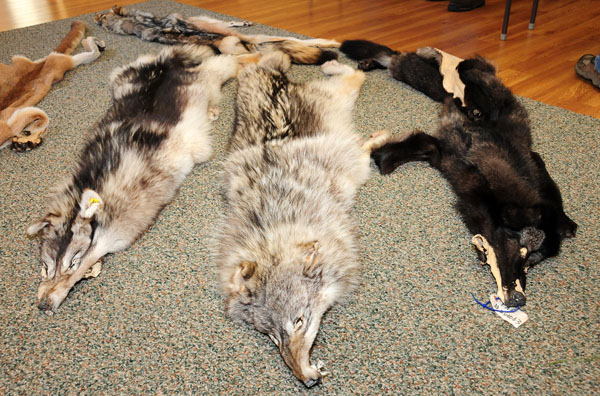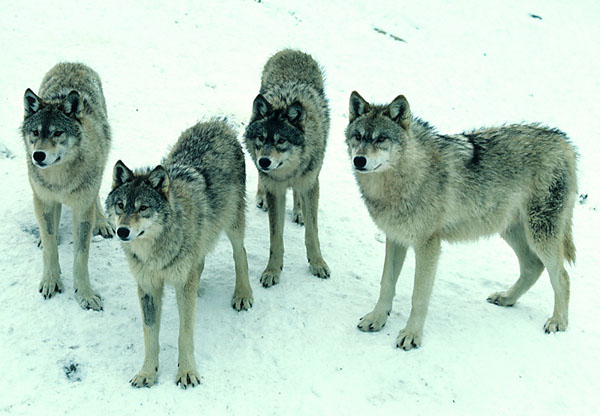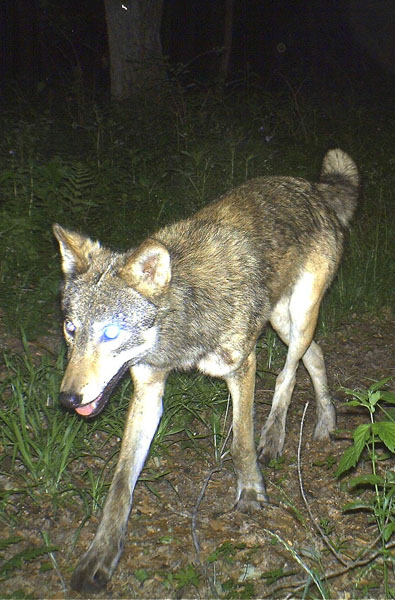LAST UPDATED: May 1st, 2015
Many folks were talking about wolves and wolf numbers in late May after Wisconsin’s “wolf advisory committee” recommended a 156-wolf kill for the 2014 season, about 100 fewer than the state’s actual kill in 2013. With the quota chosen, everyone is again arguing if we’re persecuting an innocent victim or going easy on a common villain as the Department of Natural Resources plans Wisconsin’s third wolf hunting/trapping season. Either way, expect lots of numbers, predictions and projections as DNR administrators weigh the committee’s quota and prepare a final recommendation to the seven-citizen Natural Resources Board for its meeting in late June. Just don’t expect too much from all the numbers. About the only people speaking with stubborn certainty about wolves are those whose magic number is zero: Either they demand the kill be zero, or they demand the wolf population be zero.
Wolf pelts make highly prized keepsakes for successful hunters.
Neither extreme will prevail or go away, so the rest of us must remain patient and monitor the process. Eventually, we’ll better understand how hunting and trapping affect the wolf population’s size and structure, as well as the behavior of individual wolves and wolf packs. Meanwhile, the wolves will go on being wolves, oblivious to our values, politics and debates. It almost reminds me of Illinois’ late Sen. Everett Dirksen, who once said of federal-budget battles: “A billion here, a billion there, and pretty soon you’re talking about real money.” In other words, at some point all the theory and assumption becomes a plan with goals, duties, debts and consequences. But we know far less about managing wolf populations than we do crafting budgets and allocating pork-barrel programs. After all, this is only Year 3 of Wisconsin’s regulated wolf-hunt, and each season provides new tests, quotas and lessons.
Wisconsin will likely aim for a kill of 150-plus wolves this fall during its third wolf season. Herb Lange/Wisconsin DNR photo:
When asked in late May about the proposed 156-wolf quota, wildlife professor Tim Van Deelen at the University of Wisconsin-Madison called it “a continuing experiment” and said he’s interested to see what it reveals. “I don’t have strong feelings one way or another,” Van Deelen said. “The way this is developing, it’s obviously a year-by-year decision, and we’re still learning how the wolf population sorts out hunting mortality. It’s too soon to make broad predictions of success or extinction, so I can’t find within me a reason to be all upset.” If DNR administrators and the DNR Board support the committee’s 156-wolf quota – much as it backed the committee’s 251-wolf recommendation in 2013 – it would reduce the wolf population by 3 percent to 20 percent, said David MacFarland, the agency’s large-carnivore ecologist.
The DNR recently estimated the wolf population to be a minimum of 638 to 667. Spring births usually double the population temporarily before illness, injuries, accidents and other factors reduce the population in the months that follow. If the DNR’s projection is right, hunting season would help drop next winter’s wolf population to between 510 and 647, still above the 350-wolf minimum in the state’s management plan.
A northern Wisconsin wolf trots through a woods during a recent summer
Going into the 2013 season, the DNR also predicted a 3 percent to 20 percent decline for the then estimated 800-wolf population. The 257-wolf kill dropped the population about 19 percent to roughly 650 wolves. “We were within the projected population reduction in 2013, but at the high end of it,” MacFarland said. “This year we’re still trying to reduce the population toward the long-term goal, but at a slower rate than a year ago.” The hunting and trapping season opens Oct. 15 and lasts until the kill reaches individual quotas in Wisconsin’s six wolf-hunting zones. MacFarland said the 2014 quota would be split among the zones as such: Zone 1, 33 wolves; Zone 2, 16; Zone 3, 41; Zone 4, nine; Zone 5, 21; and Zone 6, 36.
MacFarland said as the population drops, it’s important to use more caution. “The smaller the population, the greater the risk and uncertainty,” he said. “With a population this size, every six wolves is about 1 percent of the entire population. It’s not like whitetails, where every 10,000 deer is 1 percent of the population. Extra vehicle kills here and there can change the equation for wolves.” MacFarland believes this year’s quota is a responsible compromise between Wisconsin’s varied interest groups. “We have people who don’t want wolves living anywhere in the state, and we have others who don’t think wolves should be killed for any reason,” he said. “We’ve shown we can quickly close the season when nearing the quota. It’s not perfect, but it’s effective. It protects the population from overharvest.”
UW-Madison wildlife professor Tim Van Deelen
Van Deelen described himself as “agnostic” about annual quotas. “We’re harvesting the population at a high rate, but one year’s harvest by itself won’t harm the population unless there’s some residual effects we don’t know about yet,” he said. “We have to keep watching how the population responds.” What do you think? How do you feel about this?

 By
By 







